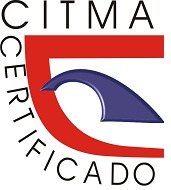Diseño e implementación de una maqueta de un Sistema de Información Ambiental al ciudadano
Palabras clave:
Arduino, ciudad inteligente, información ambiental, MQTT, Rasberri PiResumen
En este artículo se expone el diseño e implementación de la maqueta de un sistema de información ambiental al ciudadano, basado en plataformas de hardware y software libre. La propuesta se despliega en las plataformas Arduino y Raspberry Pi. Utilizando diferentes sensores conectados a una placa Arduino Mega, se miden las variables ambientales de temperatura, humedad, iluminancia y nivel de lluvia, llevándose también la información de fecha y hora. Las variables medidas se muestran de manera local usando un display de cristal líquido. La información proveniente de los sensores se transmite de manera inalámbrica, utilizando el protocolo de comunicación MQTT a una Raspberry Pi, encargada de concentrar la información y visualizarla en una pantalla real. El sistema ofrece la posibilidad de configuraciones local y remota.
Citas
Modebadze, V. (2021). The issue of unchecked population growth and its effect on environmental degradation. Kut Bilim Sosyal Bilimler ve Sanat Dergisi, 1(1), 36-44. Recuperado de: https://dergipark.org.tr/en/pub/kutbilim/issue/69572/1109621
Naciones Unidas (2015). Perspectivas de la población mundial. Hallazgos clave y tablas avanzadas. Recuperado de: https://population.un.org/wpp/publications/files/key_findings_wpp_2015.pdf
Novotný, R., Kuchta, R., & Kadlec, J. (2014). Smart city concept, applications and services. Journal of Telecommunications System & Management, 3(2), 1-5.
Eremia, M., Toma, L., & Sanduleac, M. (2017). The smart city concept in the 21st century. Procedia Engineering, 181, 12-19.
Giffinger, R., & Gudrun, H. (2010). Smart cities ranking: an effective instrument for the positioning of the cities? ACE: architecture, city and environment, 4(12), 7-26.
Nordin, R. (2012). Creating knowledge-based clusters through urban development (Tesis Doctoral, Universitäts-und Landesbibliothek Bonn).
Costa, D. G., & Duran-Faundez, C. (2018). Open-source electronics platforms as enabling technologies for smart cities: Recent developments and perspectives. Electronics, 7(12), 404.
Sarkar, I., Pal, B., Datta, A., & Roy, S. (2020). Wi-Fi-based portable weather station for monitoring temperature, relative humidity, pressure, precipitation, wind speed, and direction. Information and Communication Technology for Sustainable Development (pp. 399-404). Springer, Singapore.
Rahut, Y., Afreen, R., Kamini, D., & Gnanamalar, S. S. (2018). Smart weather monitoring and real time alert system using IoT. International Research Journal of Engineering and Technology, 5(10), 848-854.
Brito, R. C., Favarim, F., Calin, G., & Todt, E. (2017, November). Development of a low cost weather station using free hardware and software. 2017 Latin American Robotics Symposium (LARS) and 2017 Brazilian Symposium on Robotics (SBR) (pp. 1-6). IEEE.
Semenov, E. S., Ivanchenko, G. S., Kharchenko, A. V., & Kolobanov, R. V. (2019, May). Mobile weather station based on AT mega 2560 microprocessor. IOP Conference Series: Materials Science and Engineering (Vol. 537, No. 3, p. 032086). IOP Publishing.
Novianty, I., Ferdika, A., Sholihah, W., Siskandar, R., & Sari, I. P. (2019, September). Design of Portable Weather Station Using MQTT Protocol. 2019 2nd International Conference of Computer and Informatics Engineering (IC2IE) (pp. 199-202). IEEE.
Tenzin, S., Siyang, S., Pobkrut, T., & Kerdcharoen, T. (2017, February). Low cost weather station for climate-smart agriculture. 2017 9th international conference on knowledge and smart technology (KST) (pp. 172-177). IEEE.
Bell, S., Cornford, D., & Bastin, L. (2015). How good are citizen weather stations? Addressing a biased opinion. Weather, 70(3), 75-84.
Tanner, B. D. (2009). Automated weather stations. Remote Sensing Reviews, 5(1), 73-98.
Rodríguez, A. R., Álvarez, J. R. V., González, J. G., & Benítez, V. R. (2018). Monitoring tool for water quality and quick alert of flooding. Sistemas y Telemática, 16(44), 25-34.
Salgueiro, L. J. G., González, A. A., & Rodríguez, P. A. R. (2018). Help button for elderly people on the Arduino platform. Sistemas y Telemática, 16(45).
Suárez, R. (2 de octubre de 2019). Prototipos para una ciudad inteligente. Granma. https://www.granma.cu/file/pdf/2019/10/02/G_2019100208.pdf
Delgado, T., Sánchez, A., & Reyes, R. (2019). Laboratorios urbanos para ciudades inteligentes: Primeros pasos en municipios cubanos. (Ponencia). X International Greencities Congress (Vol. 2019, p. 10).
Banzi, M., & Shiloh, M. (2022). Getting started with Arduino. Maker Media, Inc.
Mouser (2022). DHT11 Humidity & Temperature Sensor. Recuperado de: https://www.mouser.com/datasheet/2/758/DHT11-Technical-Data-Sheet-Translated-Version-1143054.pdf
Sparkfun (2022). Ultrasonic Ranging Module HC-SR04. Recuperado de: https://cdn.sparkfun.com/datasheets/Sensors/Proximity/HCSR04.pdf
Richardson, M., & Wallace, S. (2012). Getting started with raspberry PI. O'Reilly Media, Inc.
Novianty, I., Ferdika, A., Sholihah, W., Siskandar, R., & Sari, I. P. (2019, September). Design of Portable Weather Station Using MQTT Protocol. 2019 2nd International Conference of Computer and Informatics Engineering (IC2IE) (pp. 199-202). IEEE.
Lekić, M., & Gardašević, G. (2018, March). IoT sensor integration to Node-RED platform. 2018 17th International Symposium Infoteh-Jahorina (Infoteh) (pp. 1-5). IEEE.
Descargas
Publicado
Cómo citar
Número
Sección
Licencia
Derechos de autor 2022 Miguel Ángel González Muñoz, Alejandro José Cabrera Sarmiento

Esta obra está bajo una licencia internacional Creative Commons Atribución-NoComercial 4.0.













